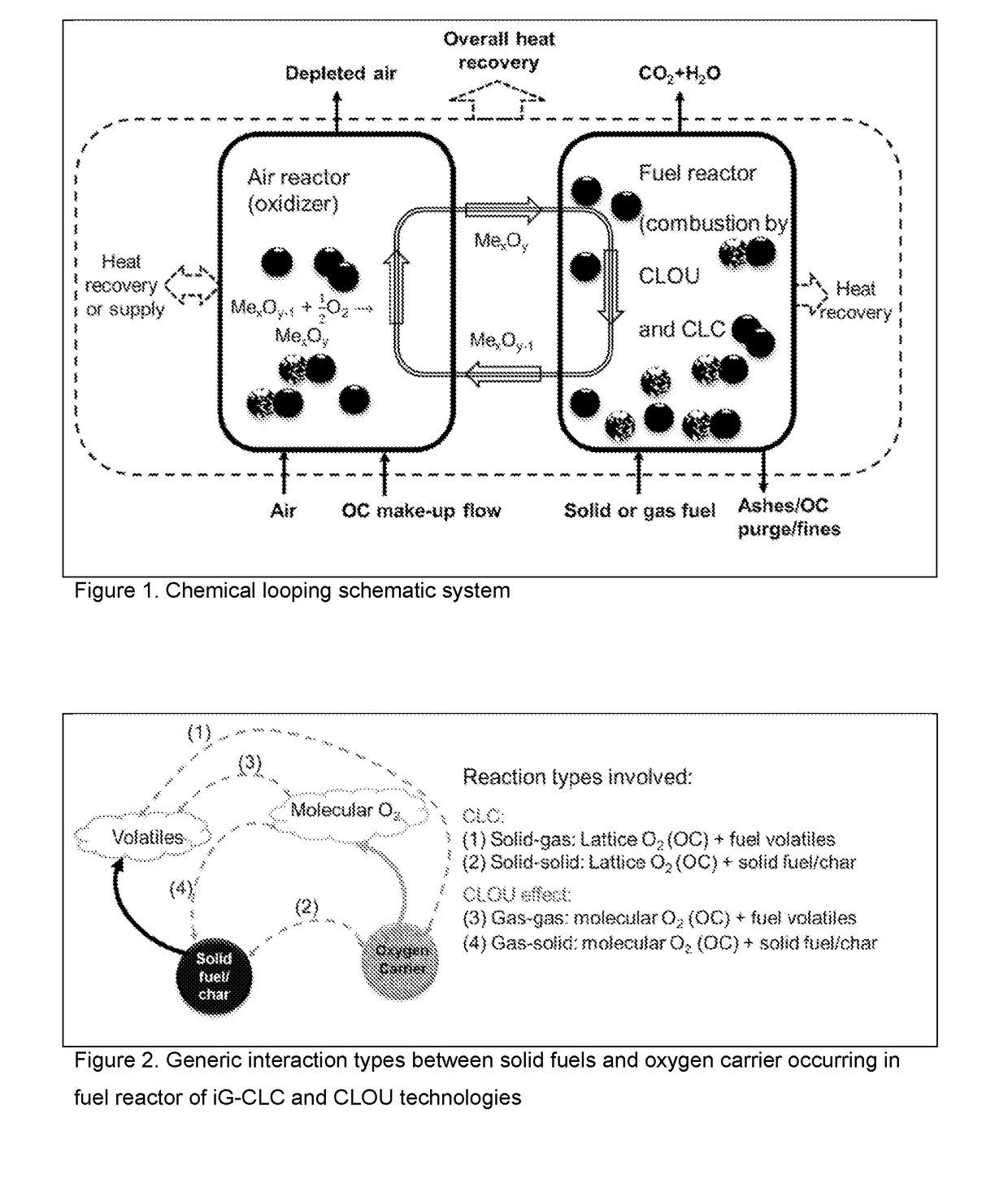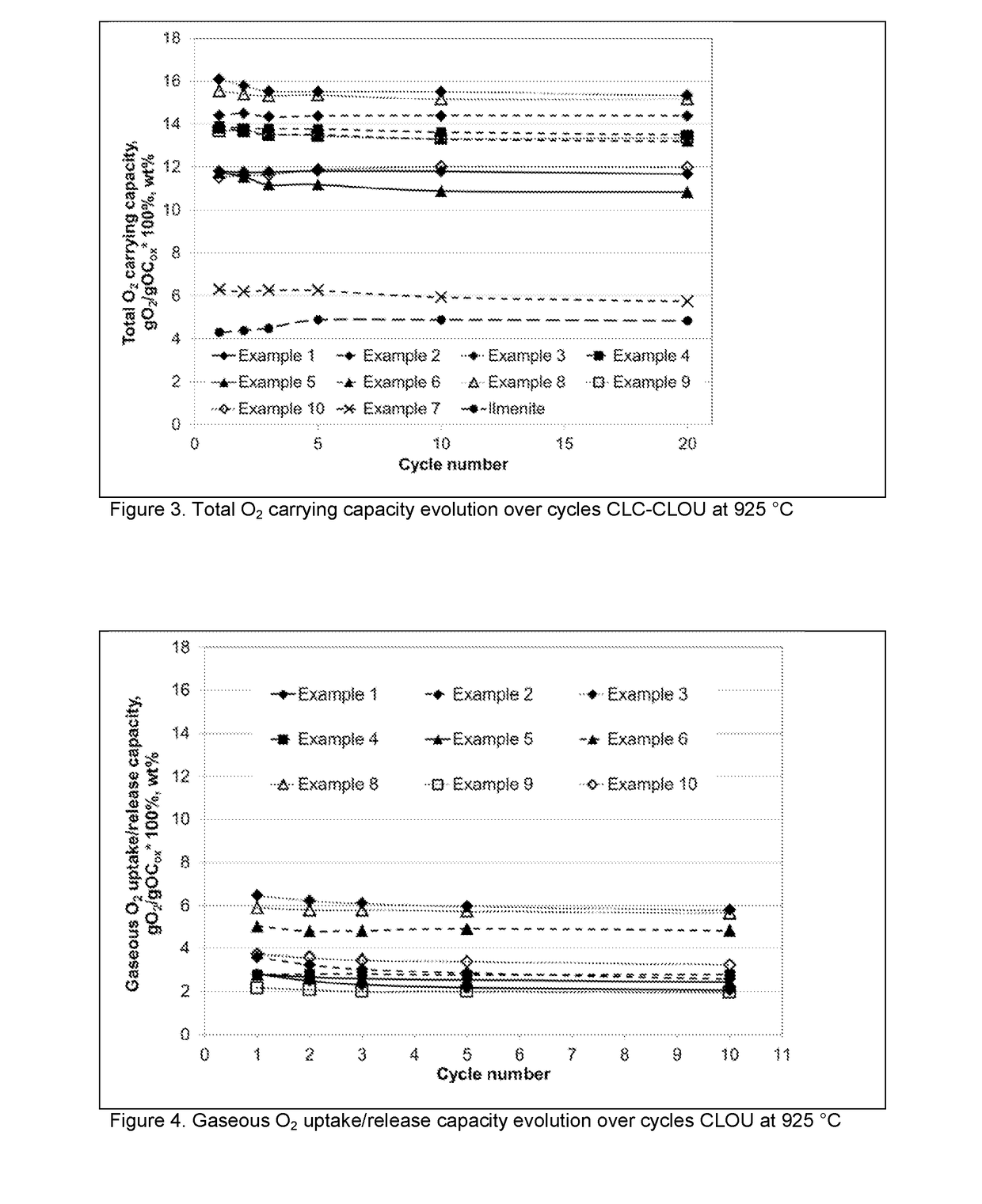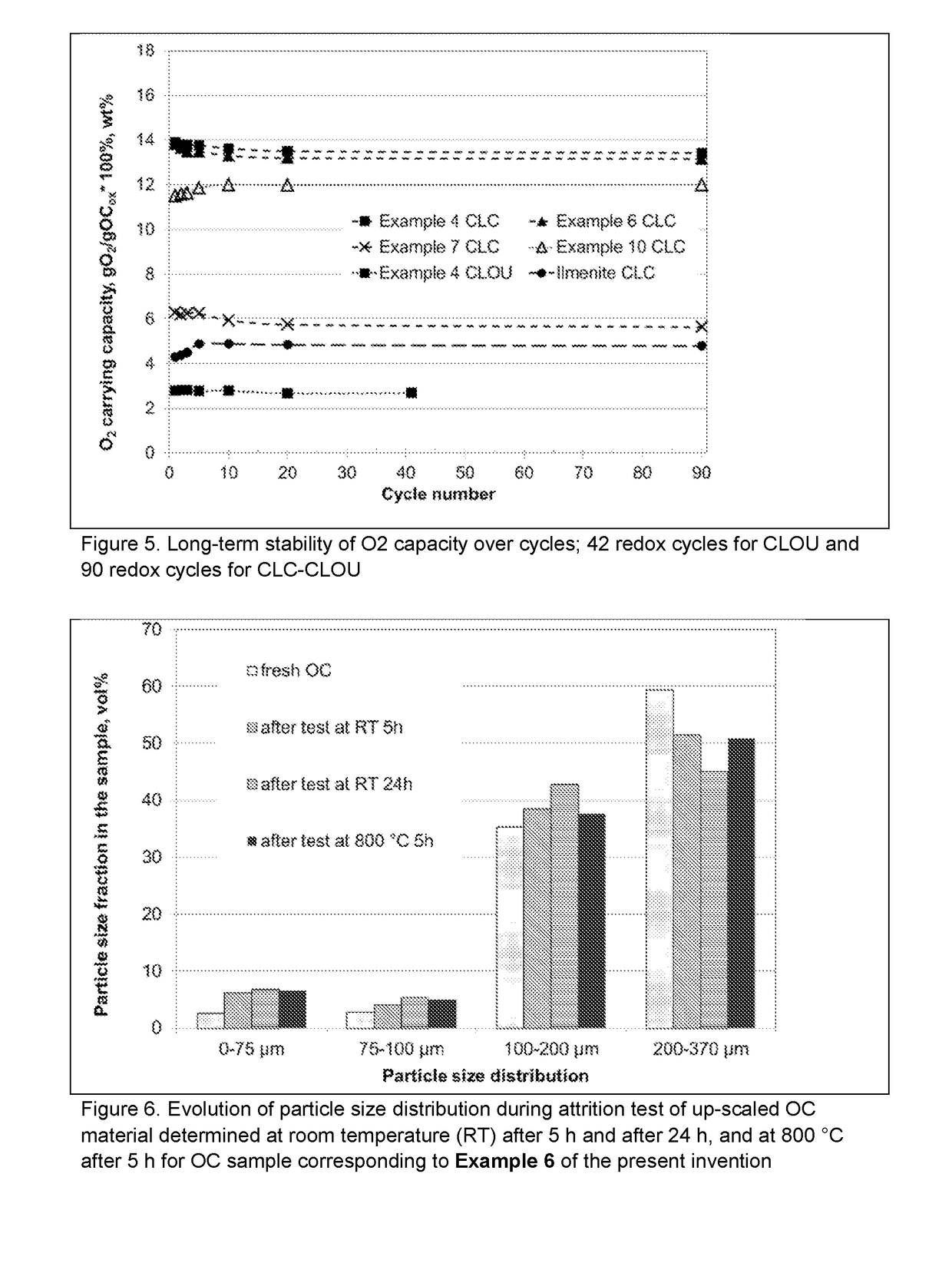Sustainable Oxygen Carriers for Chemical Looping Combustion with Oxygen Uncoupling and Methods for Their Manufacture
a technology of oxygen carrier and looping combustion, which is applied in the direction of combustion types, physical/chemical process catalysts, bulk chemical production, etc., can solve the problems of high cost of ocs application, low efficiency of clc combustion of solid fuels by clc, and substantial increase of cosub>2 /sub>capture costs, etc. cost-effective
- Summary
- Abstract
- Description
- Claims
- Application Information
AI Technical Summary
Benefits of technology
Problems solved by technology
Method used
Image
Examples
example 1
[0120]A preparation of an oxygen carrier involves agglomeration of 48 g of CuO, 72 g of Mn sinter (with an approximate content of 60 wt. % of Mn in oxide form) using 13.2 g of 15 wt. % aqueous solution of polyethylene glycol 4000. Dried agglomerates are calcined for 2 h at 820° C. using a Heraeus-Saga Petroleum furnace with static air flow and the following temperature profile: starting temperature 90° C., heating at 10° C. / min up to 820° C. during 2 hours, then cooling down to 90° C. at 15° C. / min, thereby obtaining 40 wt. % of CuO (primary OC) and 60 wt. % of Mn sinter (secondary OC) agglomerates as final product.
example 2
[0121]A preparation of an oxygen carrier according to the experimental conditions described in Example 1, wherein the quantities of CuO, manganese sinter and the binder are as follows: 60 g of CuO, 40 g of Mn sinter using 11.8 g of 15 wt. % aqueous solution of polyethylene glycol 4000. Thereby obtaining 60 wt. % of CuO (primary OC) and 40 wt. % of Mn sinter (secondary OC) agglomerates as final product.
example 3
[0122]A preparation of an oxygen carrier according to the experimental conditions described in Example 1 wherein the quantities of CuO, manganese sinter and the binder are as follows: 80 g of CuO, 20 g of Mn sinter using 12.6 g of 15 wt. % aqueous solution of polyethylene glycol 4000. Thereby obtaining 80 wt. % of CuO (primary OC) and 20 wt. % of Mn sinter (secondary OC) agglomerates as final product.
PUM
| Property | Measurement | Unit |
|---|---|---|
| mechanical stability | aaaaa | aaaaa |
| concentration | aaaaa | aaaaa |
| crushing strength | aaaaa | aaaaa |
Abstract
Description
Claims
Application Information
 Login to View More
Login to View More - R&D
- Intellectual Property
- Life Sciences
- Materials
- Tech Scout
- Unparalleled Data Quality
- Higher Quality Content
- 60% Fewer Hallucinations
Browse by: Latest US Patents, China's latest patents, Technical Efficacy Thesaurus, Application Domain, Technology Topic, Popular Technical Reports.
© 2025 PatSnap. All rights reserved.Legal|Privacy policy|Modern Slavery Act Transparency Statement|Sitemap|About US| Contact US: help@patsnap.com



